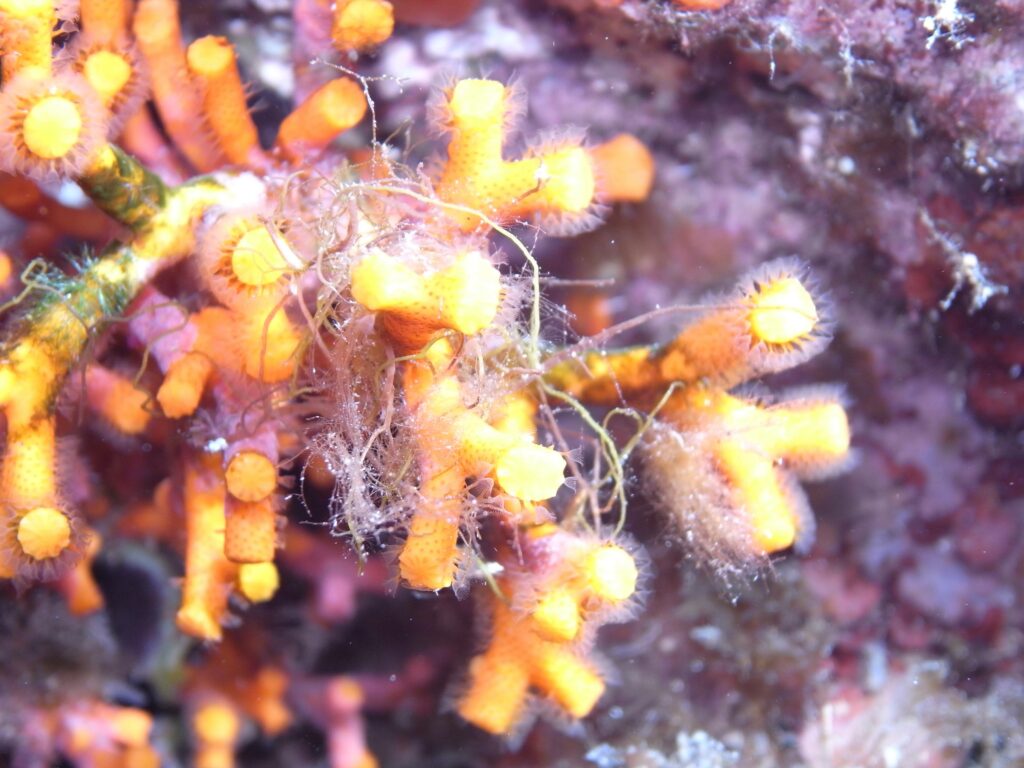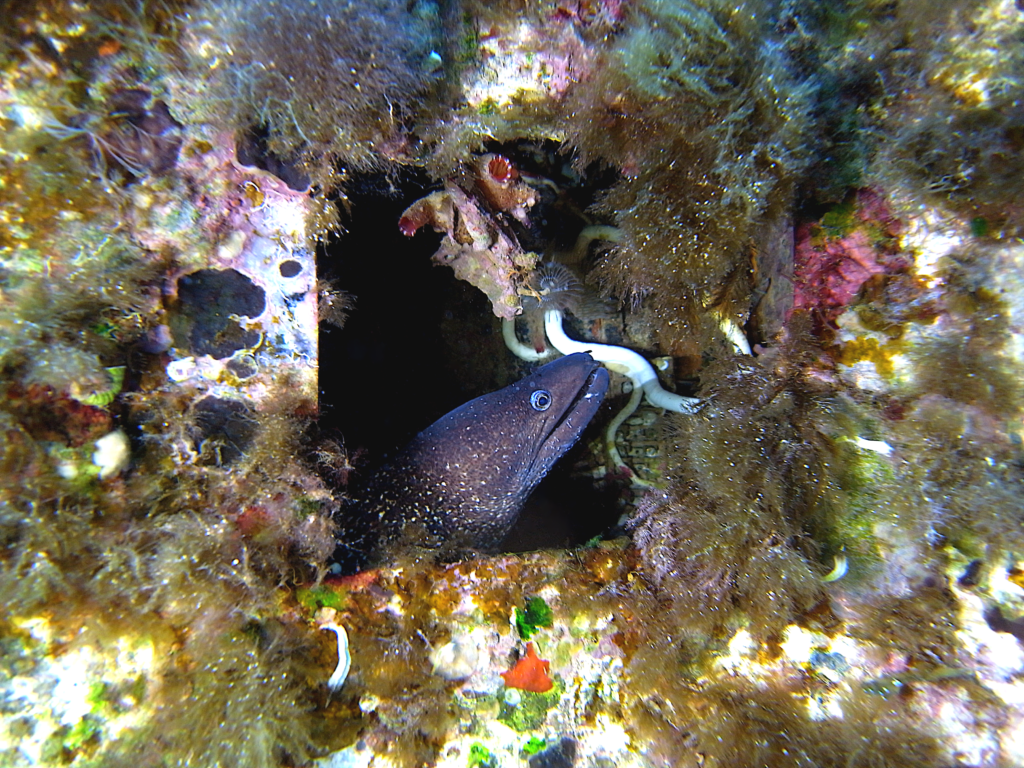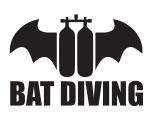Have you realized that you can encounter a lot of life on and around wrecks? I started diving because of fish. I always wanted to see and swim with fish – wrecks were not interesting for me at that time. This changed when I first dived wreck and found that there is a lot of life inside, outside, and on the wreck. The term “wreck as a shelter” describes the fact, that fish use structures, like wrecks, as shelter and feeding habitat. The provided surface area is covered by biofilm and sessile animals, which in turn provide nutrition and habitat to fish and other animals.
The story of many wrecks is not solely the historical story of the ship, that drowned or was scuttled. It is also the story within the marine habitat that it lays: The accumulation of bacteria on the surface, algae and sponges, and the provision of shelter, habitat, and feeding ground for fish and marine mammals. Furthermore, it is the story of each dive and each diver, who visits the wreck. Wrecks provide stories in many directions and are a diving attraction in many different ways: historical, explorational, and biological.
Cirkewwa Marine Park is one, if not the most popular dive site in Malta. It is a, almost non-stop, visited training and fun-dive spot. Next to that, Malta is affected by a high population rate, tourism and impacts of climate change. The marine areas of malta are a key component of maltese economy and cultury, but suffering degradation. These facts, put in the context of the mediterranean, which is a biodiversity hotspot giving home to 4-18 % of all identified marine species, while holding only 0,82 % of total global surface area, show that any marine environment around Malta shall be protected and conserved. As diving is a important economical sector in Malta, the study aims to find out in what way wrecks can serve conservation and how scuba diving and marine conservation can go hand in hand.



I decided to study the relationship of wrecks and nature conservation as my dissertation project within my Wildlife Management and Conservation MSc. When I knew, that I would like to absolve my research in the marine sector, I have been diving since approximately two years. I was happy to have worked before as intern in the Cirkewwa Marine Park, and knew the wrecks and the dive-site, so I decided to conduct my research on the two wrecks P29 and Rozi.
We stayed for three months on the island, conducting my fieldwork and giving classes. It was a real adventure with many obstacles: costs; logistics; availability; dive planning; equipment:
- Receiving wrong quotes beforehand and calculating the whole trip on base of these, too low costs
- Transportation and heat
- Availability – fieldwork needs to be paid, and money needs to be produced for this. It was a challenge to keep enough time for the fieldword.
- Dive planning: what to do when? How much workload for one dive?
- Equipment: leaking dry-suit became my normal status quo, broken dump-valves and flooded camera was just an add-on.
I want to find out if wrecks, as artificial reefs, could serve nature conservation.
These research objectives will follow following research questions:
Do the assemblages on wrecks significantly differ with those on adjacent
natural reef in species present?
Does the estimated cover of species assemblages on the wrecks
significantly differ with the estimated cover of species assemblages on the natural reef?
Does the biological diversity significantly differ between the wrecks and
the natural reef?
Do scuttled wrecks support marine ecosystems?

